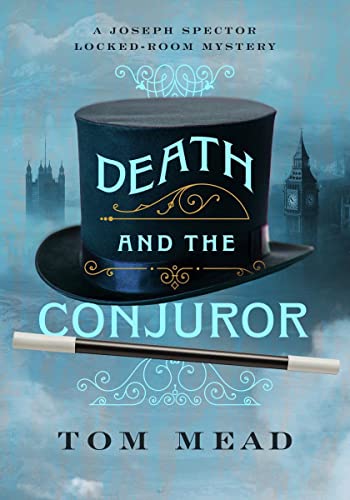Death and the Conjuror: A Locked-Room Mystery
In what promises to be the first in a series of novels featuring the magician-turned-detective’s assistant, Joseph Spector, Tom Mead offers up a locked room murder mystery, a death in a sealed elevator and the mysterious disappearance of work of art.
When psychiatrist Anselm Rees is found in his locked study with his throat cut, Inspector Flint of Scotland calls in his friend Joseph Spector to assist in his investigation. Fans of Golden Age historical fiction will enjoy this duo as a new spin on a traditional pairing of professional policeman and amateur sleuth—think Sherlock Holmes and Inspector Lestrade, Gideon Fell and Superintendent Hadley, Poirot and Inspector Japp. All the elements you would expect are here, and the book is pleasingly referential. When asked how he solved one puzzle, Spector tells Flint it was “Elementary, if you’ll forgive the flagrant appropriation. A smidge of graphite under the thumbnail.” At one point Spector outlines the seven theories of the locked room mystery presented by John Dickson Carr in The Hollow Man, and as the story builds to a climax, Mead speaks directly to the reader with an “interlude” where he asks the amateur sleuths amongst his readers to declare their own solutions.
With a range of suspects ranging from the psychiatrist’s celebrity clients to his daughter, and a satisfying background of 1930s London society, Death and the Conjuror ticks all the boxes.










